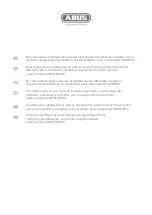
Interface
Task
LabVIEW
1.
In the mmWave OTA Validation Configurator, select the
Execution
tab.
2.
In the
Sequence File Path
field, browse to
<NIDocDir>
\
<TestStand 20xx>
(64-bit)\Examples\OTA Test
\Sequences\
and select
Autonomous_NR.seq
, then click
OK
.
3.
Click
Start
to run the sequence in TestStand.
Tip
After you start the sequence, the settings in the
mmWave OTA Validation Configurator are disabled. When the
test is complete, load a configuration file to enable the settings.
Microsoft
Visual
C# .NET
1.
Close the mmWave OTA Validation Configurator and launch
Microsoft Visual Studio.
2.
Open the
OtaTestExample.sln
solution file located at
<NIDocDir>
\OTA Test\Examples\DotNET\VS20
xx
.
3.
Set
Solution Configurations
to
Release
and build the solution.
4.
Open the command prompt and enter the following text to change
the current directory to the folder that contains the built executable:
cd C:\Users\Public\Documents\National Instruments
\OTA Test\Examples\DotNET\VS20
xx
\OtaTestExample
\bin\Release
5.
Enter the following text into the command prompt to run the OTA
test:
OtaTestExample.exe -mode=Autonomous -
input="C:\Users\Public\Documents\National
Instruments\TestStand 20
xx
(64-bit)\Examples\OTA
Test\Sequences\Autonomous_NR.csv"
Note
Append the following text to the previous command to
test the positioner without performing any RF measurements:
-
positioneronly=true
Note
Use the OTA LabVIEW or Visual C# .NET API if your application
requires low-level control and configuration of the OTA test. Refer to the
for more information.
If the sequence finishes without error, your system is fully operational. You can display a 3D
antenna pattern and review the NR measurements results of the antenna. To verify the
accuracy of the test, refer to
on page 26.
Tip
NI recommends familiarizing yourself with the example sequences. When you
save the example sequence as a new file, you must also save the configuration file
34
|
ni.com
|
mmWave OTA Validation Test Reference Architecture















































